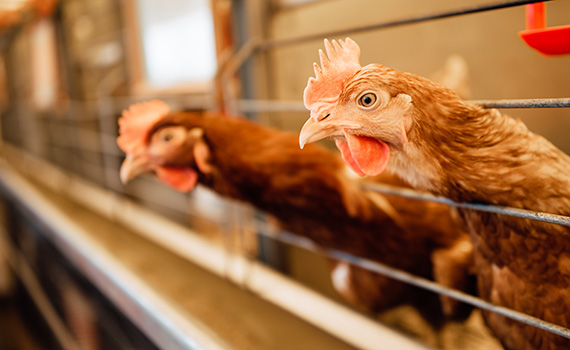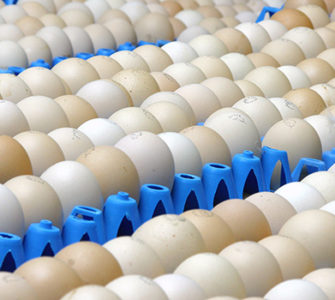Early IBV infections in layers can increase cysts associated with false layer syndrome
The timing of infectious bronchitis virus (IBV) infections in chicks can significantly impact the development of cysts which could be associated with false layer syndrome, researchers at the University of Georgia have discovered.
IBV is primarily known to cause respiratory illness, but the disease can also affect egg production.
“IBV targets epithelial cells,” Adrea Mueller, PhD student at the University of Georgia, told Poultry Health Today. Chickens have epithelial cells in the respiratory tract, in the kidneys and the reproductive tract, among other areas.
Egg production loss, misshapen or shell-less eggs are all signs that it has targeted the reproductive tract.
False layer syndrome is also caused by exposure to IBV, which triggers the formation of cystic oviduct that ultimately means birds will appear healthy, consume feed as normal but not lay eggs.
“Occasionally, in live birds, you would see waddling or pendulous abdomens, but for the most part, they’re going to look clinically normal,” Mueller explained.
“The only difference is going to be your production levels, and then the presence of cystic oviducts.”
In Mueller’s experience, about 20% of birds in a flock might be affected. However, there are many unknowns, she said, which prompted her to investigate the impact that the timing of infection had on the number of cystic oviducts.
In her recent study, specific-pathogen-free layers were challenged at different points with two strains of IBV — an M41 and a DMV variant.
Birds were infected at 3 days, 7 days and 2-weeks of age, then later evaluated for cysts.
The researchers found birds infected before two weeks of age had a higher percentage of cysts. M41-exposed birds had the highest cyst levels from infection at day 7, but for the DMV birds, it was day 3.
“We think that that’s just a difference in the viruses themselves and how the viruses work within the bird,” Mueller said. “I don’t, personally, think that there’s a difference between infection at 3 days versus infection at 7.
“I think that as long as the birds are infected before that 2-week cut-off is when infection is important.”
The work demonstrates that vaccination strategies will be an essential part of reducing false layer syndrome.
“I know that in the field when flocks are vaccinated earlier on, say at day of hatch, they have less or if any cyst development than birds who are not vaccinated until 2 weeks of age.
“I think that vaccination is going to be important when we’re talking about this,” Mueller concluded.
Posted on October 5, 2021

















